What are our needs of calcium and minerals?
On this site you can find the recommended allowances of minerals and vitamins. The official USA RDA of calcium can be found here. For example, the recommended RDA of calcium for an adult is 1000 mg.However, Dr. McDougall states that in reality,
“Human Calcium Needs Are Surprisingly Low. A recent study of Inuit (Eskimo) children found their diet, consisting largely of meat (which has almost no calcium), provided about 120 mg of calcium daily, but because of their physiologic adaptations these children were found to be healthy. As long ago as 1978 Paterson wrote in the Postgraduate Medical Journal, 'Many official bodies give advice on desirable intakes of calcium but no clear evidence of a calcium deficiency disease in otherwise normal people has ever been given. In Western countries the usual calcium intake is of the order of 800-1000 mg/day; in many developing countries figures of 300-500 mg/day are found. There is no evidence that people with such a low intake have any problems with bones or teeth. It seems likely that normal people can adapt to have a normal calcium balance on calcium intakes as low as 150-200 mg/day and that this adaptation is sufficient even in pregnancy and lactation. Inappropriate concern about calcium intake may divert attention and resources from more important nutritional problems.' And that is exactly what the talented marketing people in the dairy industry have done with the help of friendly government officials in the USDA: they have placed the spotlight on the nutrient, calcium, which is easily obtained in sufficient amounts from almost any diet—and at the same time, taken the beam of truth off of the fat, cholesterol, and contamination—the life-threatening components of dairy foods. One of the ways this has been done is by sensationalizing rare cases of calcium deficiency in children on bizarre diets.” (Dr. McDougall)
Dr. Glenville adds
“Don’t pay attention to the government’s RDA or recommended daily allowances. I don’t think anyone really knows the basis for these government-recommended amounts of nutrients, but at least one author has theorised that they came from nutrient profile of the needs of a World War I soldier, later revised and translated to women’s needs without any scientific basis. Considering the relative nutrient status of some 100 years ago, and the comparatively primitive nature of the laboratory equipment of the time, it makes absolutely no sense to make such a determination to apply to today’s humans.” (Dr. Glenville)
Are dairy products the best source of calcium?
Most of doctors and authors quoted in this post agree that dairy products must be avoided:Dr. T.C.Fry argues that dairy products contain too much phosphorus and a deficit of magnesium and manganese. Moreover, they are acid-forming foods.
Dr. Thompson and Dr. Mouton provide studies that show that a higher rate of osteoporosis is linked to dairy products.
Dr. Mouton also explains the problem of dairy intolerance related to calcium malabsorption.
Dr. Glenville compares the rate of osteoporosis in different countries with different dairy intake.
Finally, T.C.Fry says that casein in milk disturbs calcium absorption.
“Boosting intake of conventional calcium sources (dairy products) does nothing to alleviate the situation. Calcium absorption drops sharply when intake is elevated, so little of the added calcium actually reaches the bloodstream. Moreover, dairy products are high in phosphorus as well as calcium, and almost all of the phosphorus does get into the bloodstream. Thus the addition of dairy products to a diet already high in phosphorus may actually speed up the rate of bone deterioration.
All so-called “protein foods,” including milk, tend to acidify the blood. Without exception, they are rich in the three acid-forming minerals; moreover, all of their chlorine, and a major segment of their phosphorus, lies external to their protein. Thus, they have an acid-forming capacity which is independent of their protein.
Cow’s milk is used to induce both manganese and magnesium deficiencies in animals.
Manganese-deficient milk left young rabbits with bowing front legs and a bone structure that was weak and porous. Magnesium-deficient low-fat milk induced kidney stones in 97 percent of a group of rats; it can offer no solace to milk drinkers that researchers believe the protein in milk played a role in the stone formation. In all fairness, though, it should be pointed out that milk is not the only dietary item that is low in manganese and magnesium: all animal products are markedly low in both minerals; in fact, the entire American diet is dreadfully low in both.” (T.C.Fry)
All so-called “protein foods,” including milk, tend to acidify the blood. Without exception, they are rich in the three acid-forming minerals; moreover, all of their chlorine, and a major segment of their phosphorus, lies external to their protein. Thus, they have an acid-forming capacity which is independent of their protein.
Cow’s milk is used to induce both manganese and magnesium deficiencies in animals.
Manganese-deficient milk left young rabbits with bowing front legs and a bone structure that was weak and porous. Magnesium-deficient low-fat milk induced kidney stones in 97 percent of a group of rats; it can offer no solace to milk drinkers that researchers believe the protein in milk played a role in the stone formation. In all fairness, though, it should be pointed out that milk is not the only dietary item that is low in manganese and magnesium: all animal products are markedly low in both minerals; in fact, the entire American diet is dreadfully low in both.” (T.C.Fry)
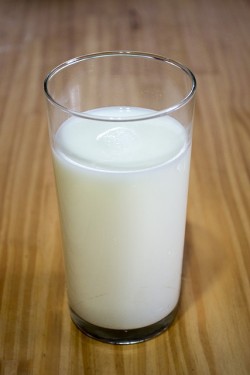 “Willett, who co-authored The Nurses’Health Study, one of the largest investigations ever into the risk factors for major chronic disease in 122.000 women, found that women with the highest calcium consumption from dairy products actually had substantially more fractures than women who drank less milk.” (Dr. Thompson)
“Willett, who co-authored The Nurses’Health Study, one of the largest investigations ever into the risk factors for major chronic disease in 122.000 women, found that women with the highest calcium consumption from dairy products actually had substantially more fractures than women who drank less milk.” (Dr. Thompson)"Other studies confirm the absence of protection of dairy against osteoporosis. Furthermore, an American study published in 1997 is even more troubling: the risk of hip fracture is increased by 45% in women consuming at least two glasses of milk per day, compared to the ones that have maximum one glass per week.
Far from protection, the intake of milk may favour osteoporosis. This is what we can conclude from worldwide statistics which relate the intake of milk to the rate of osteoporosis: nations with higher intake of milk show higher rates of osteoporosis.
These phenomena can be explained by the suffering of the small intestine mucosa due to milk intolerance. The richness of calcium in dairy products do not have favorable consequences on the amount of calcium assimilated when this calcium is not absorbed because of an intolerance. On the contrary, the disruption of the absorption decreases the capability of assimilating the calcium contained in other food, leading to a calcium deficit, which is the origin of bone diseases.
What is more, the troubles of assimilation affect other micronutrients too, such as magnesium and silicium" (Dr. Mouton)
“What is crucial is not the amount of calcium you put in your body, but how your body deals with it. We are the only animals that drink milk past the weaning stage and we persist in drinking a type of milk that was designed for a completely different species.
In many cultures around the world milk and dairy produce are rarely eaten. In Chine, for instance, two thirds of the population do not consume milk or milk products regularly. In the West, 70-75% of dietary calcium comes from dairy products and less than 10% from green leafy vegetables and soy bean products, compared with Chine, where only 20% of calcium comes from dairy foods and 50% from plants.
 Post-menopausal Chinese women tend to have lower hip-bone density than Caucasian women, but sustain fewer fractures.
Post-menopausal Chinese women tend to have lower hip-bone density than Caucasian women, but sustain fewer fractures.
Japan is another country where dairy products are not routinely consumed and although Americans drink three times more milk than the Japanese, the American hip fracture rate is 2.5 times higher.” (Dr. Glenville)
“It is extremely doubtful that we can utilize any of the calcium in milk in any event. The calcium in milk is bound to its protein complement, casein. Without the key enzyme, rennin, neither casein nor its nutrient complement, calcium, can be used in the digestive system.
Milk forms no part of the normal diet of man after the period of infancy and therefore our advice is—don’t drink milk or eat milk products.” (T.C.Fry)
To learn more about the reasons to avoid milk and dairy products please read this article.Far from protection, the intake of milk may favour osteoporosis. This is what we can conclude from worldwide statistics which relate the intake of milk to the rate of osteoporosis: nations with higher intake of milk show higher rates of osteoporosis.
These phenomena can be explained by the suffering of the small intestine mucosa due to milk intolerance. The richness of calcium in dairy products do not have favorable consequences on the amount of calcium assimilated when this calcium is not absorbed because of an intolerance. On the contrary, the disruption of the absorption decreases the capability of assimilating the calcium contained in other food, leading to a calcium deficit, which is the origin of bone diseases.
What is more, the troubles of assimilation affect other micronutrients too, such as magnesium and silicium" (Dr. Mouton)
“What is crucial is not the amount of calcium you put in your body, but how your body deals with it. We are the only animals that drink milk past the weaning stage and we persist in drinking a type of milk that was designed for a completely different species.
In many cultures around the world milk and dairy produce are rarely eaten. In Chine, for instance, two thirds of the population do not consume milk or milk products regularly. In the West, 70-75% of dietary calcium comes from dairy products and less than 10% from green leafy vegetables and soy bean products, compared with Chine, where only 20% of calcium comes from dairy foods and 50% from plants.
 Post-menopausal Chinese women tend to have lower hip-bone density than Caucasian women, but sustain fewer fractures.
Post-menopausal Chinese women tend to have lower hip-bone density than Caucasian women, but sustain fewer fractures. Japan is another country where dairy products are not routinely consumed and although Americans drink three times more milk than the Japanese, the American hip fracture rate is 2.5 times higher.” (Dr. Glenville)
“It is extremely doubtful that we can utilize any of the calcium in milk in any event. The calcium in milk is bound to its protein complement, casein. Without the key enzyme, rennin, neither casein nor its nutrient complement, calcium, can be used in the digestive system.
Milk forms no part of the normal diet of man after the period of infancy and therefore our advice is—don’t drink milk or eat milk products.” (T.C.Fry)
Foods rich in calcium and other minerals
T.C.Fry gives a list of fruits and vegetables with high calcium content, as well as a list of them with high phosphorus and high magnesium content. Regarding vegetables, he recommends to avoid those with high oxalate content. The following foods are high in calcium content: Sesame seeds, Oranges, Green vegetable leaves, Strawberries, Almonds, Papayas, Figs, Most nuts, Sunflower seeds, Most seeds, Broccoli, Most green vegetables, Apricots, Most fruits, Dates.
The following foods are high in calcium content: Sesame seeds, Oranges, Green vegetable leaves, Strawberries, Almonds, Papayas, Figs, Most nuts, Sunflower seeds, Most seeds, Broccoli, Most green vegetables, Apricots, Most fruits, Dates.ll seeds and nuts are excellent sources of phosphorus. In addition, the following foods contain a high percentage of phosphorus: Coconuts, Apples, Peaches, Pears, Apricots, Avocados, Broccoli, Green vegetable leaves, Figs, Carrots, Dates, Mung bean sprouts, Cabbage, Beets, Squash, Persimmons
The following are good sources of magnesium: Almonds, Cherries, Dates, Green vegetable leaves, Bananas, Beets, Walnuts, Avocados, Raisins, Pears, Raspberries, Broccoli, Mangoes, Canteloupe
The late Henry C. Sherman, Ph.D., Sc.D., formerly professor of Chemistry, Columbia University (Essentials of Nutrition), said that the dark green leaves are a prime source of calcium, well utilized in nutrition.
Be sure to note and differentiate among the various dark green leaves. The “good guys” are romaine, buttercrunch and leaf lettuce; kale, broccoli, Brussels sprouts, cabbage and collard. These vegetables contain significant amounts of calcium and negligible amounts of oxalic acid. In kale, broccoli and collard, calcium exceeds oxalic acid by a ratio of forty-two to one. Beet greens, spinach and Swiss chard have up to eight times as much oxalic acid as calcium. (Prevention, June 1980, p. 40)” (T.C.Fry)
Another list is provided by Dr. Glenville:
"
200 gr of cooked kale or 350gr of cooked broccoli contain the same amount of calcium as 225ml of milk.” (Dr. Glenville)
Another obvious observation that may be made when worrying about calcium because someone is told to stop consumption of milk and dairy products, is that there isn’t any animal that drinks milk once it is grown up, but all of them have very strong bones, both herbivorous and carnivorous animals, birds or any other kinds of animals. How do they get their calcium? The answers are below:
| Food | Calcium (mg per 100gr) |
| Milk | 119 |
| Cheddar cheese | 721 |
| Eggs (yolks) | 139 |
| Hazelnuts | 113 |
| Tofu | 162 |
| Wholemeal flour | 80 |
| Cod | 21 |
| Trout | 86 |
| Figs | 145 |
| Haddock | 42 |
| Chickpeas | 49 |
| Miso | 65 |
| Broccoli | 48 |
200 gr of cooked kale or 350gr of cooked broccoli contain the same amount of calcium as 225ml of milk.” (Dr. Glenville)
 “Where do cows, moose, and even elephants (who all have very strong bones) get their calcium if all they eat is grass? Humans drink milk for calcium, but if cows just eat grass, where do they get their calcium?
“Where do cows, moose, and even elephants (who all have very strong bones) get their calcium if all they eat is grass? Humans drink milk for calcium, but if cows just eat grass, where do they get their calcium?While we tend to associate dietary calcium with diary products it is found in many other foods including plants. Cows obtain their calcium from grass hay which has approximately 0.4% calcium. Other plants such as alfalfa have approximately 1.5%. This calcium is absorbed by the plant from the soil. “ (The Sidney Morning Herald)
“Wild carnivores eat pretty much the entire animal. In eating the skin, hair/feathers, hooves/nails, muscles, bones, connective tissues, blood, internal organs, and even the gut contents, the carnivore is getting all of its nutritional needs met in one neat package.
A diet based on muscle tissue, while providing plenty of calories, protein, and some vitamins, minerals, and essential fatty acids, will be profoundly deficient in calcium and marginal or frankly deficient in various other essential nutrients. Adding bones, bone meal, or another source of calcium addresses the calcium problem, but an all-meat-and-bone diet, when the meat is just muscle, is still an incomplete diet for a species designed to eat most, if not all, of its prey” (Anima Vet)
“How do birds get calcium in the wild? Hawks can get calcium from the blood and bones of their prey, shorebirds may consume the calcium-rich shells of small mollusks, while certain species of sparrows and blackbirds eat plant matter, like kale, that is high in calcium.” (Wild Birds Unlimited)
Supplementation
“Bone is comprised of at least a dozen minerals, and the exclusive focus on calcium supplementation is likely to worsen bone density and actually increase your risk for osteoporosis. Overconsumption of calcium creates other mineral deficiencies and imbalances that will increase your risk of heart disease, kidney stones, gallstones, osteoarthritis, hypothyroidism, obesity and type 2 diabetes.” (Dr. Mercola)
 "It is a grave error to believe that the body can digest and assimilate and utilize powdered nails and crushed rocks. Mineral supplements are of no benefit to the body because they are: 1) inorganic and 2) fragmented.
"It is a grave error to believe that the body can digest and assimilate and utilize powdered nails and crushed rocks. Mineral supplements are of no benefit to the body because they are: 1) inorganic and 2) fragmented.
Because mineral supplements are inorganic, the body cannot assimilate or use them. In fact, the body must work harder to compensate for the imbalance created by ingesting these supplements. The body accelerates its eliminative activities and works hard to expel these foreign substances. This stimulation is often mistaken for the “beneficial action” of the supplement. Actually, the supplements are not beneficial—they are harmful—and they are inanimate and therefore incapable of acting (except chemically).
As health consumers have grown more aware of the differences between organic and inorganic minerals, so have producers of these supplements. Consequently, there are now mineral supplements which are advertised as coming from “organic” sources. These are equally useless because they exist in a fragmented state, extracted from the sources within which they naturally occur.
Minerals do not work in isolation. When they are extracted from their natural sources, the other co-existing vitamins, minerals, enzymes, etc., are not also extracted. Even if they were, the process of laboratory extraction destroys any vital benefits that may have been associated with the minerals.
Minerals must be consumed in their natural, unfragmented and organic state to be of any use to the body. The best mineral supplements are those naturally occurring in mineral-rich foods in their unprocessed state—fresh fruits, vegetables, nuts, seeds and sprouts. (T.C.Fry)
“Here are the results of a study done in 1986. Yes, supplementing with calcium did increase bone density, but it does not reduce bone fractures. The countries with the most calcium consumption have the largest chance of hip fractures. Why is this?
Too much calcium in the bones actually makes bones more brittle. So you get denser bones when you supplement with calcium, but you are just as likely to break those bones as you were before you 30-year, 1200mg-a-day, odyssey.” (Olsonnd)
“Many nutrients compete for absorption sites in the gut. So, if we supplement too much calcium, for example, it may impair absorption of other nutrients: magnesium, zinc, copper, iron, some amino acids and others, creating deficiencies in those nutrients.
Indeed this is a very confusing area of nutrition. The truth is nobody knows how to prescribe vitamins and minerals because we do not have enough research or knowledge on this subject.“ (Dr. Campbell-McBride)
Read more about my opinion on supplementation here. "It is a grave error to believe that the body can digest and assimilate and utilize powdered nails and crushed rocks. Mineral supplements are of no benefit to the body because they are: 1) inorganic and 2) fragmented.
"It is a grave error to believe that the body can digest and assimilate and utilize powdered nails and crushed rocks. Mineral supplements are of no benefit to the body because they are: 1) inorganic and 2) fragmented.Because mineral supplements are inorganic, the body cannot assimilate or use them. In fact, the body must work harder to compensate for the imbalance created by ingesting these supplements. The body accelerates its eliminative activities and works hard to expel these foreign substances. This stimulation is often mistaken for the “beneficial action” of the supplement. Actually, the supplements are not beneficial—they are harmful—and they are inanimate and therefore incapable of acting (except chemically).
As health consumers have grown more aware of the differences between organic and inorganic minerals, so have producers of these supplements. Consequently, there are now mineral supplements which are advertised as coming from “organic” sources. These are equally useless because they exist in a fragmented state, extracted from the sources within which they naturally occur.
Minerals do not work in isolation. When they are extracted from their natural sources, the other co-existing vitamins, minerals, enzymes, etc., are not also extracted. Even if they were, the process of laboratory extraction destroys any vital benefits that may have been associated with the minerals.
Minerals must be consumed in their natural, unfragmented and organic state to be of any use to the body. The best mineral supplements are those naturally occurring in mineral-rich foods in their unprocessed state—fresh fruits, vegetables, nuts, seeds and sprouts. (T.C.Fry)
“Here are the results of a study done in 1986. Yes, supplementing with calcium did increase bone density, but it does not reduce bone fractures. The countries with the most calcium consumption have the largest chance of hip fractures. Why is this?
Too much calcium in the bones actually makes bones more brittle. So you get denser bones when you supplement with calcium, but you are just as likely to break those bones as you were before you 30-year, 1200mg-a-day, odyssey.” (Olsonnd)
“Many nutrients compete for absorption sites in the gut. So, if we supplement too much calcium, for example, it may impair absorption of other nutrients: magnesium, zinc, copper, iron, some amino acids and others, creating deficiencies in those nutrients.
Indeed this is a very confusing area of nutrition. The truth is nobody knows how to prescribe vitamins and minerals because we do not have enough research or knowledge on this subject.“ (Dr. Campbell-McBride)
How to prevent osteoporosis?
Avoid refined and modern food
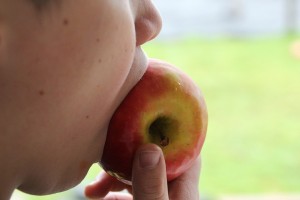 “An amazing study was done by Dr. Weston Price about fifty years ago. He was a dentist who traveled the world over to investigate the relationship between diet and dental health. What he discovered was that as long as people ate their natural diet of unprocessed and unrefined foods, they enjoyed sound teeth and healthy gums.
“An amazing study was done by Dr. Weston Price about fifty years ago. He was a dentist who traveled the world over to investigate the relationship between diet and dental health. What he discovered was that as long as people ate their natural diet of unprocessed and unrefined foods, they enjoyed sound teeth and healthy gums.Whenever the modern foods of civilization—refined grains, sugars, junk foods, preserved foods, etc.—were introduced, the teeth of the people rotted, their gums became diseased and the actual shape of their mouths changed.” (T.C.Fry)
"Two serious defects from which many individuals in our modernized civilization suffer are impacted teeth and the absence of teeth due to their failure to develop. It is significant that in the arches of the primitives races practically all teeth form and erupt normally, including the third molars. In the modernized primitives and among our modern whites with deformed dental arches many teeth are impacted and often several of the permanent teeth have never formed." (Dr. Price)
Low-protein diet
The fact that high-protein diets are harmful for bone health is not clear. There is no consensus concerning the indigenous populations with a high protein intake. T.C.Fry (rawfoodexplained.com) says that they do suffer from osteoporosis, while Dr. Edward Howell and Dr. Weston Price says that only eskimos who have been in contact with modern civilization develop this kind of diseases, while the ones that keep their original diet do not. I think that the difference may exist due to the fact that T.C.Fry studied the eskimo civilizations that had already been modernized, while Dr. Howell and Dr. Price studied the really isolated ancient populations.This is important, because it contradicts the theory of a high-protein diet being responsible for osteoporosis.
It seems that the indigenous populations with a high-protein diet didn’t have any problems with osteoporosis, while modern civilizations with a high-protein diet do, as Glenville says in her book. Maybe it is the kind of meat that counts: wild fish and grass-fed meat animals vs factory fish and meat. Or maybe other factors are correlated with modern people with vegetarian diets, such as healthier lifestyle in terms of avoiding not only meat, but also alcohol, tobacco, exercising more, a higher respect for nature, etc.
Concerning vegetarians, there is the same contradiction; Dr. Price states that vegetarian indigenous populations show problems with their teeth, while T.C.Fry says that vegetarian indigenous populations do not suffer from osteoporosis. It may also depend on the kind of vegetarian diet they follow, that is, on the amount of vegetables, grains, dairy products and eggs they consume. As we have seen, dairy products can have a very big impact on the development of osteoporosis, so not all vegetarian diets are the same!
 "Poor posture is the hallmark of osteoporosis, and Sula Benet describes the Abkhasians posture as “unusually erect, even unto advanced ages.” Elderly Abkhasians are unbothered by spontaneous fractures, but as horsemen and mountain climbers, they do sometimes break bones and when such breaks do occur, they are wont to heal rapidly and completely, which would not be the case if they were suffering from osteoporosis.
"Poor posture is the hallmark of osteoporosis, and Sula Benet describes the Abkhasians posture as “unusually erect, even unto advanced ages.” Elderly Abkhasians are unbothered by spontaneous fractures, but as horsemen and mountain climbers, they do sometimes break bones and when such breaks do occur, they are wont to heal rapidly and completely, which would not be the case if they were suffering from osteoporosis.Vilcabamba centenarians are, in Grace Halsell’s words, “known to have healthy bones.” Hundred-year-old Vilcabambans still work in the fields, bending the whole day, and show no ill effects. Ms. Halsell reports never having heard of an elderly Vilcabamban’s having fallen and broken an arm, leg or hip. She adds that she saw not one Vilcabamban who limped or was disabled.
Other groups that manage to avoid osteoporosis include the Hunzas and Yucatan Maya. Like the Abkhasians and Vilcabambas, these groups live in traditional ways and take low-protein, primarily vegetarian diets. And from the way groups taking flesh-based diets decline with age, there is little doubt it is the diet of the Hunza, Abkhasians, et al. rather than their lifestyles, that enables them to circumvent osteoporosis.
The heavy meat eating Masai males, Eskimos, and Greenlanders apparently develop osteoporosis at very early ages. The Eskimos normally become bent, shrunken and disabled in their late 20s while Greenlanders become decrepit in their 30s. The most interesting case, however, is that of the Masai. The tribe’s males spend their formative years roaming with their herds, drinking the animals’ blood and milk, and eating only small amounts of plant foods. Then, at the age of 20 or so, they take off to do a two-year stint as warriors, during which time they try to live on flesh alone. Following the warrior stint, and while still in their early 20s, they migrate to the tribes’ villages, arriving at the villages with bent backs, diminished heights and debilitated bodies, whereupon they are cared for by the villages’ women until they die. Now here’s the rub: the tribe’s females, who remain in the villages while the males are out subsisting on flesh and making war, raise and eat plant foods, and remain remarkably free of osteoporosis.” (T.C.Fry)
“A great number of eskimos live on the mainland and islands, a distance of several hundred miles, and have little or no contact with this food [modern foods]. … In their 288 teeth only one tooth was found that had ever been attacked by tooth decay, or 0.3 percent…. In the case of people who had received a considerable quantity of the “store grub” twenty-seven per cent of the teeth had been attacked by dental caries. In another village, none of the people who had lived on native foods had any tooth attacked by tooth decay. Those living partly on “store grub” had dental caries in 12.2 per cent of their teeth. In other villages the percentage of tooth caries in people eating native foods was 0.1,0.1, 0.09, while the percentage in people eating modern food was 11.6, 35, 13.
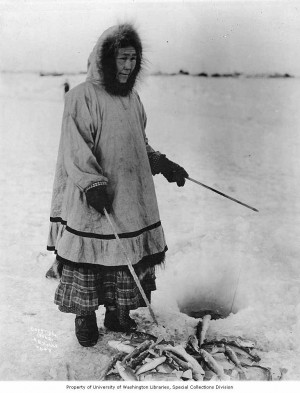 The foods used by these primitive eskimos are dried salmon, seal oil, fish eggs, caribou, ground nuts, berries, blossoms of flowers, sorrel grass, organs of the large animals of the sea.
The foods used by these primitive eskimos are dried salmon, seal oil, fish eggs, caribou, ground nuts, berries, blossoms of flowers, sorrel grass, organs of the large animals of the sea.As yet I have not found a single group of primitive racial stock which was building and maintaining excellent bodies by living entirely on plant foods. I have found in many parts of the world most devout representatives of modern ethical systems advocating the restriction of foods to the vegetable products. In every instance where the groups involved had been long under this teaching, I found evidence of degeneration in the form of dental caries, and in the new generation in the form of abnormal dental arches to an extent very much higher than in the primitive groups who were not under this influence. ” (Dr. Price)
“Eskimos live on an exclusively meat and fish diet, all eaten usually, and preferably, raw. These people were examined for evidence of renal and vascular disease. The results show that there was no unusual prevalence of vascular disease or renal disease. The people lead a life of great physical activity.
Dr. Thomas contrasts the excellent health of eskimos of northern who have been encouraged to retain their primitive ways, with the poor health of eskimos across the Atlantic. These people have abandoned their primitive methods of living. in adults there is the rheumatic pain, stiffness of joints, and fatigue.”(Dr. Thompson)
Take care of your gut flora
“I recommend putting most effort into implementing the [GAPS] diet first and starting the healing process in the gut. Once the digestive system starts working properly in many patients their nutritional deficiencies disappear without any supplementation. They disappear the natural way through the body sorting it out for itself. “ (Dr. Campbell-McBride)
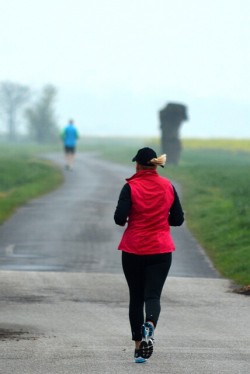
Exercise
“Remember that bone is living tissue that requires regular physical activity in order to renew and rebuild itself. Peak bone mass is achieved in adulthood and then begins a slow decline. Exercise is very important in maintaining healthy bone mass. Weight-bearing exercise is one of the most effective remedies against osteoporosis. “ (Dr. Mercola)
“Inactivity is still another, and possibly important, cause of skeletal erosion. Extended bed rest led to calcium losses at a rate of 6% of total bone mass per year in young men. On the other hand, exercise tends to enhance calcium retention and it has been shown that low-protein, low-fat diets boost endurance and engender spontaneous activity. " (T.C.Fry)
“Inactivity is still another, and possibly important, cause of skeletal erosion. Extended bed rest led to calcium losses at a rate of 6% of total bone mass per year in young men. On the other hand, exercise tends to enhance calcium retention and it has been shown that low-protein, low-fat diets boost endurance and engender spontaneous activity. " (T.C.Fry)
Leafy vegetables are the best source of calcium
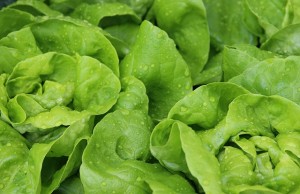 “We do need a good source of calcium in the diet, but we don’t need milk. Milk is, after all, merely a substitute, and a poor one, for dark green leafy vegetables. Collards, parsley, turnip greens, watercress, kale, mustard, spinach, etc. provide twice as much calcium as milk and yet they contain considerably less phosphorus. They have calcium-to-phosphorus ratios three to four times that to milk. And unlike milk, greens have a strong alkaline ash; what is more, they are excellent sources of manganese, magnesium, and Vitamin C. They are also free of the troublesome protein, fat and cholesterol of milk. As for the problem of excess protein, replacing the milk and cheese with a few ounces of greens (which is all that is necessary) would cut protein intake by 10-15 grams per day.
“We do need a good source of calcium in the diet, but we don’t need milk. Milk is, after all, merely a substitute, and a poor one, for dark green leafy vegetables. Collards, parsley, turnip greens, watercress, kale, mustard, spinach, etc. provide twice as much calcium as milk and yet they contain considerably less phosphorus. They have calcium-to-phosphorus ratios three to four times that to milk. And unlike milk, greens have a strong alkaline ash; what is more, they are excellent sources of manganese, magnesium, and Vitamin C. They are also free of the troublesome protein, fat and cholesterol of milk. As for the problem of excess protein, replacing the milk and cheese with a few ounces of greens (which is all that is necessary) would cut protein intake by 10-15 grams per day.A few greens, including spinach, are high in oxalic acid, which may reduce the availability of their calcium. It is advisable to include at least one oxalate-free green in the diet, but there is no reason to avoid these vegetables completely. Vegetables are best taken raw, of course.” (T.C.Fry)
“The best way to make your diet the more alkaline is simply to aim to have more alkaline-forming foods each day than acid. It has been suggested that the ratio should be 80 per cent alkaline to 20 percent acid.
As a quick reminder acid-forming foods are meat, dairy, eggs, fish, shellfish, nuts, grains, beans, soft fizzy drinks, alcohol, tea, coffee and most drugs; alkaline-forming foods are fruit and vegetables.
Instead of looking at the actual nutrients in foods (for example, calcium in dairy foods), researchers have been looking at the effects of the foods themselves. Scientists have been finding that higher consumption of fruit and vegetables has a positive effect on bone health across all ages and both sexes - young girls and boys, pre-menopausal women, peri-menopausal women, post-menopausal women and elderly women and men.” (Dr. Glenville)
“The calcium absorption from vegetables is as good or better than that of milk. Calcium absorption from milk is approximately 32 percent. Figures for broccoli, Brussels sprouts, mustard greens, turnip greens, and kale range between 40-64 percent. A noteworthy exception is spinach, which contains a large amount of calcium, but in a form that is poorly absorbed.” (PhysiciansCommittee)
Conclusions
The most important aspect to take into account for osteoporosis and other bone disease prevention is not the amount of calcium intake, but avoiding foods that:
- are refined and poor in minerals,
- contain anti-nutrients that disturb mineral absorption,
- are acid-forming in the metabolism so need to be neutralized by alkaline minerals,
- you are intolerant to or that may lead to the development of food intolerances,
- disturb the gut flora, favouring the development of undesirable bacteria that prevent proper absorption of nutrients
Also avoid medicine, alcohol, soft drinks, caffeine and salt.
As we have seen, dairy products are not the best source of calcium, on the contrary, they may cause osteoporosis.
Supplementation of calcium is not recommended because of the risk of creating excess calcium in the body and mineral imbalances.
Other lifestyle habits impacting bone diseases are mainly sun exposure, stress and exercise.
So don’t worry too much about calculating the amount of calcium in your food. Wild animals don't make calculations about their food, they simply eat what is destined to their species.
Simply follow a diet that is full of fruit and vegetables, avoid all previously mentioned detrimentral products and lead a healthy lifestyle
As we have seen, dairy products are not the best source of calcium, on the contrary, they may cause osteoporosis.
Supplementation of calcium is not recommended because of the risk of creating excess calcium in the body and mineral imbalances.
Other lifestyle habits impacting bone diseases are mainly sun exposure, stress and exercise.
So don’t worry too much about calculating the amount of calcium in your food. Wild animals don't make calculations about their food, they simply eat what is destined to their species.
Simply follow a diet that is full of fruit and vegetables, avoid all previously mentioned detrimentral products and lead a healthy lifestyle
Robert Thompson M.D. & Kathleen Barnes, “The calcium lie”
T.C. Fry, “The Life Science Health"
http://www.rawfoodexplained.com/why-we-should-not-eat-meat/osteoporosis-the-key-to-aging.html
http://www.rawfoodexplained.com/why-we-should-not-eat-animal-products/dairy-products.html
http://www.rawfoodexplained.com/the-basic-four-diet/should-we-drink-milk.html
http://www.rawfoodexplained.com/minerals/the-minerals-in-the-body.html
http://www.rawfoodexplained.com/minerals/organic-and-inorganic-minerals.html
http://www.rawfoodexplained.com/healthy-eyes-and-teeth/natural-hygiene-your-key-to-dental-health.html
http://www.rawfoodexplained.com/why-we-should-not-eat-meat/osteoporosis-the-key-to-aging.htm
Marilyn Glenville PhD, “Osteoporosis the silent epidemic”
Dr. Weston Price, “Nutrition and Physical Degeneration”
Paul Fanny, PhD, “The AAA Diet”
Dr. Georges Mouton, “Ecosystème intestinal et Santé optimale”
Marilyn Glenville PhD, “Osteoporosis the silent epidemic”
David Klein, Ph.D, “Self Healing Colitis & Crohn’s”
Dr. Natasha Campbell-McBride MD, “Gut and Phsychology Syndrome”
Dr. Peter Osborne, “Can Gluten Sensitivity Cause Bone Loss?”
Dr. Mercola:
“The "Calcium Lie" Every Woman Should Know About”
“Calcium Supplements Can Spike Your Heart Attack Risk by 30%…”
Dr. McDougall, “When Friends Ask: Where Do You Get Your Calcium?”
The Sidney Morning Herald
Anima Vet
Wild Birds Unlimited, “Calcium and Birds”
Olsonnd, “Calcium Myths”
The Physicians Committee for Responsible Medicine, “Preventing and Reversing Osteoporosis”
“El calcio en palomas”
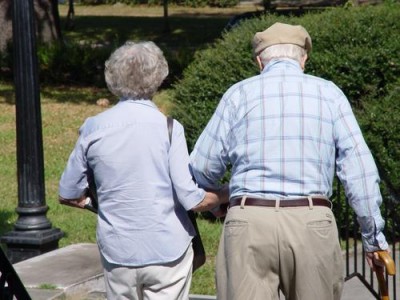 In the
In the 









 Gemma Calzada es doctora en Salud Holística y terapeuta GAPS. Su objetivo es mejorar la salud con la nutrición y el estilo de vida, y ayudar a las personas que sufren intolerancias alimentarias a vivir felices.
Gemma Calzada es doctora en Salud Holística y terapeuta GAPS. Su objetivo es mejorar la salud con la nutrición y el estilo de vida, y ayudar a las personas que sufren intolerancias alimentarias a vivir felices. 
